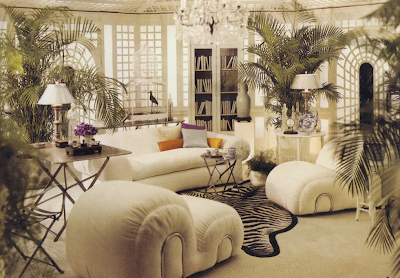 |
| Claire McCardell |
She's back (though in my mind she's never left)! Claire McCardell's wonderful 1956 how-to, "What Shall I Wear" (subtitled The What, Where, When and How Much of Fashion") has been published again. This makes the third time. I've long talked about this book—how I took it out so often from the Shaker Heights public library I eventually just stole it in 1957 when I was 15, how I had no regrets whatsoever because who could possibly want this book more than I???, how I xeroxed copies of it for years for friends and even Isaac Mizrahi*, how I eventually returned it (anonymously) to the library after finding my own used copy on ebay. Good or bad, that's all part of my history, and I own it.
 |
| 1956 edition |
 |
| 2012 edition |
 |
| 2022 edition |
"What Shall I Wear" is no mere nostalgia piece. At its first publication Claire McCardell was a recognized name in fashion. Her affordable designs for Townley were sold in major department stores like Lord & Taylor. Her use of unusual fabrics for the time (gingham, denim, jersey), easy shapes and dearth of unnecessary gew-gaws were loved by the fashion press as well as the best-dressed set (Babe Paley was a fan). She had her hand in everything from paper dolls to car interiors. Claire McCardell was the most recognized woman in American fashion at a time when few American designers were known by name.
After her death in 1958 at age 53 the business was shuttered. Her innovations lived on—worn any ballet slippers lately?—but her designs, as well as "What Shall I Wear?", lay dormant. The book was first republished in 2012 without much fanfare. That edition is since out of print. The prolific designer Tory Burch discovered Claire McCardell and not only produced her Spring/Summer 2022 collection in tribute, she managed to have "What Shall I Wear" published again in all its original glory and with a foreword by her, afterword by Allison Tolman and photo insert of Claire McCardell designs.
 |
| Tory Burch for S/S 2022 |
This time the reasoning is clear (or Claire if you'll forgive the pun): Claire McCardell is as fresh and relatable as she was at the designs' origins in the 30s, 40s, and 50s. Claire herself lived and wore her work, sometimes for years before she could convince buyers to sign on. Her designs were always purposeful and easy to wear: a "popover" that was more than an apron and could be worn over a dress as a stylish time saver in the kitchen or a "monastic" tent dress that fit the wearer's shape and could be belted many ways. She invented a capsule wardrobe of "five easy pieces" that foreshadowed Donna Karan's capsule by about 20 years. And she wrote the most wonderful book about how to dress that I've ever read.
Truth be told, Claire had help. I mean, she was far too busy to devote herself to the task of writing (which is hard believe me). Interestingly the only parts of "What Shall I Wear?" that sound dated are the "wifey" references to dropping your husband off at the train station and dressing up for his business dinners, which have the stamp of a ghostwriter and commercial appeal. But its jaunty, first-person tone still does what it always has. "What Shall I Wear?" asks you to look at what you wear as who you are and/or want to be. In the '50s that was a freedom rarely granted in fashion. Today that's a freedom we cherish but can be reluctant to embrace.
Oh, and those drawings. I had never heard of the illustrator Annabrita before or since, but she drew the woman I am still trying to become. It never ends.
*Even today original copies are as rare as hen's teeth. There's one on ebay now for $450.00.







